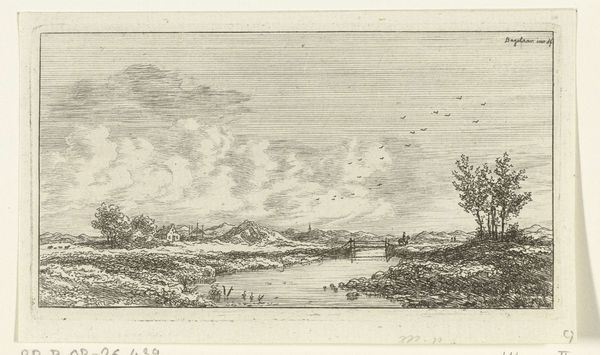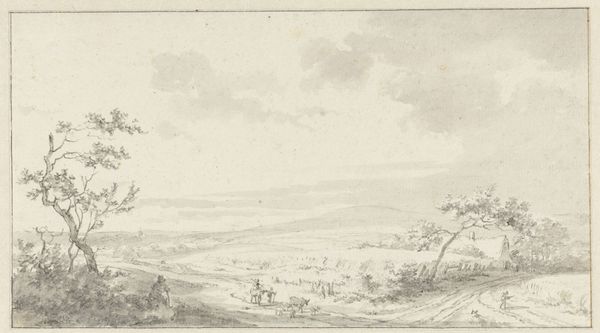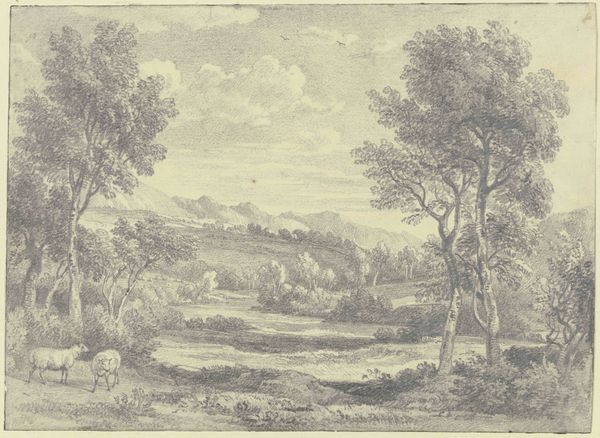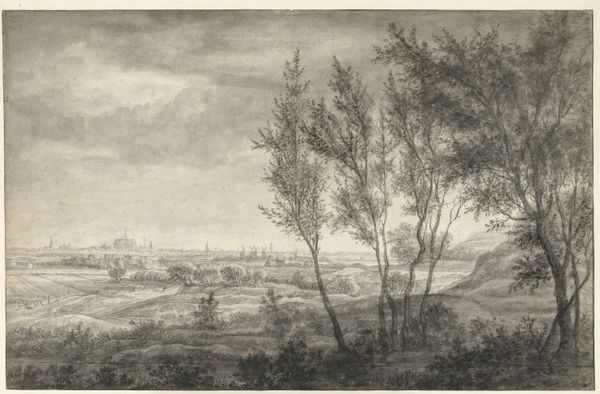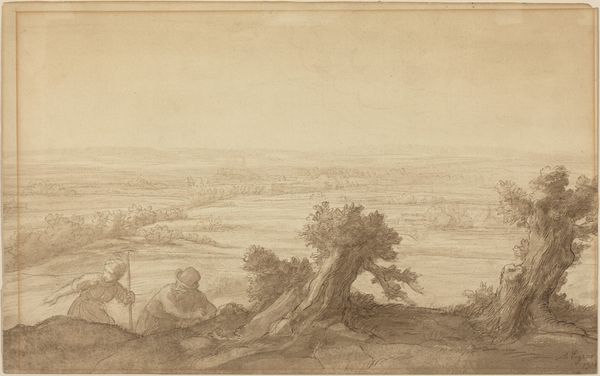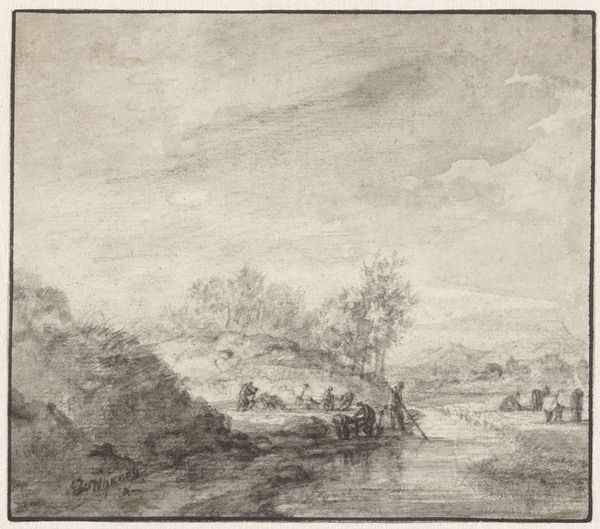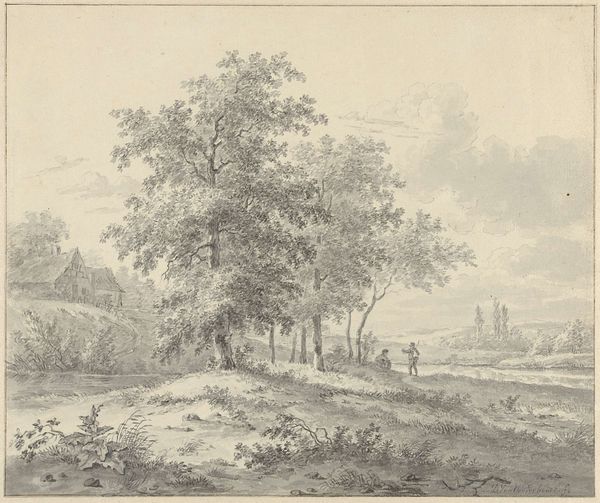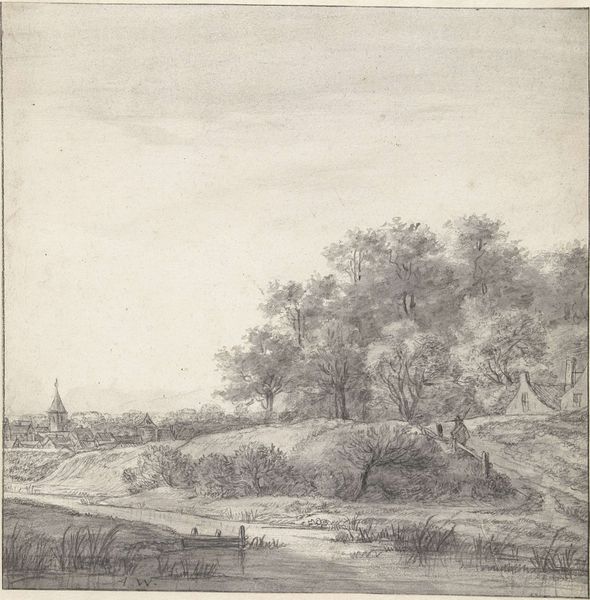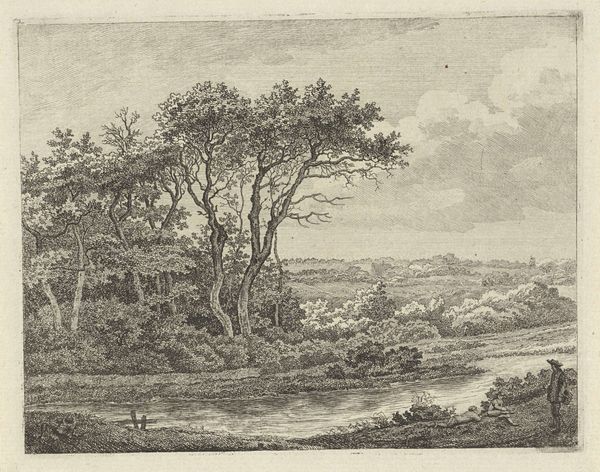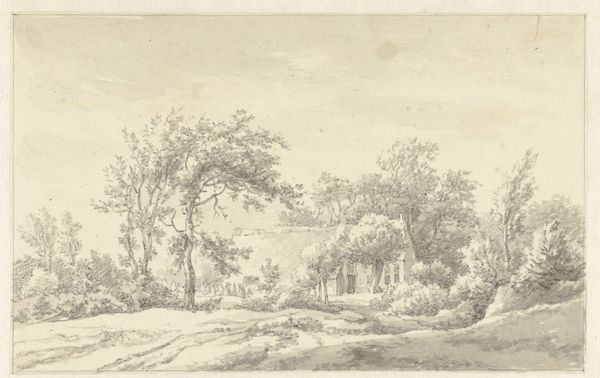
drawing, pencil
#
pencil drawn
#
drawing
#
pencil sketch
#
landscape
#
pencil drawing
#
pencil
#
realism
Dimensions: height 267 mm, width 385 mm
Copyright: Rijks Museum: Open Domain
Curator: Immediately, I'm struck by the tranquility, a quiet calm permeates this drawing. The subtle grays and whites... it's almost dreamlike. Editor: Let’s orient ourselves. What we're looking at is a landscape titled "View of Bloemendaal, from Zomerzorg" rendered in pencil. The artist is Gerrit Jan Michaelis, and its creation falls somewhere between 1785 and 1857. The viewpoint gives an elevated panorama of the countryside. Curator: You know, it feels like more than just a landscape; it feels like a portal into a memory. Look how soft the pencil strokes are, as if blurring the line between the real world and reminiscence. Does it evoke something similar in you? Editor: Structurally, the composition is divided into clear zones: foreground, middle ground, and that very distant horizon. The strategic placement of tonal values, dark to light as it recedes, creates a profound sense of depth. Note also how the atmospheric perspective minimizes details in the background—it adheres to the classic compositional techniques. Curator: I’m caught by those clouds though. Big, soft, cottony puffs, heavy with a suggestion of impending rain. There's this yearning quality; maybe it’s for something just out of reach, or maybe it's something that's passed? It’s romantic but somehow restrained. Editor: Agreed. Michaelis is playing with contrasts—the detailed foliage in the front, those diffuse clouds hovering over that hazy, almost ethereal, plane. He achieves spatial complexity with fairly limited means using strictly tonal contrast to develop the space. The absence of color adds a layer of conceptual complexity. It’s fascinating. Curator: You know, standing here with this drawing, I'm transported back to simpler times, when landscapes like this stretched untouched, whispering tales of time's gentle passing. It's a meditation on nature, transience, and memory. Editor: For me, it's an intriguing interplay between observed reality and constructed representation—how lines, shading, and organization can communicate an intensely visual and evocative encounter with space. Thank you for lending such insight into viewing this art with renewed eyes.
Comments
No comments
Be the first to comment and join the conversation on the ultimate creative platform.
